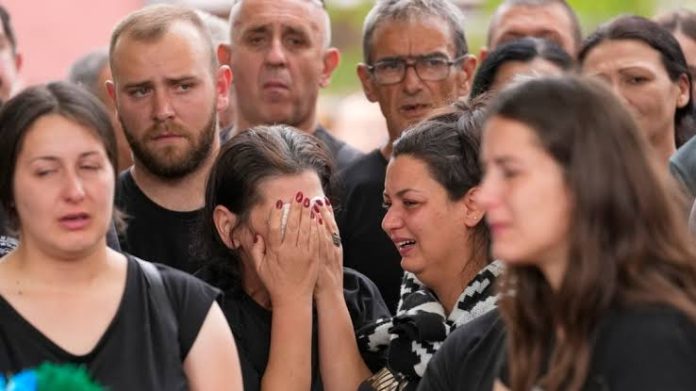Facebook Twitter (X) Instagram Somali Magazine - People's Magazine
The motive behind Sweden’s deadliest mass shooting remains unclear, but the fact that nearly all the victims were of foreign background has sparked deep concerns among the country’s immigrant communities. On February 4, 35-year-old Rickard Andersson entered the Campus Risbergska adult education center in Örebro and killed ten people before taking his own life. While police have not publicly named the victims, their identities quickly emerged in Swedish newspapers and on social media, revealing a tragic commonality—many were immigrants who had come to Sweden seeking a better future.
Among those killed was Salim Iskef, a 28-year-old Syrian nursing assistant who arrived in Sweden in 2015, as well as Niloofar Dehbaneh, a 46-year-old Iranian nursing assistant who had lived in the country since 2011. Elsa Teklay, a 32-year-old nursing assistant from Eritrea, had also been in Sweden since 2015. The victims included Bassam Al Sheleh, a 48-year-old baker from Lebanon, and Ali Mohammed Jafari, 31. Another victim, Kamar, had fled Somalia’s civil war 17 years ago. Aziza, a 68-year-old Kurdish woman who worked as a math teacher at the school, was also among those killed. Three additional women, including a 55-year-old of Bosnian origin, have not yet been publicly identified.
The massacre occurred during the middle of the school day, with gunfire erupting inside classrooms. Mirna Issa, a 31-year-old student, was in a Swedish language class when the first shots rang out. “Why? We’re just students. Students don’t do anything bad,” she told reporters as she laid flowers outside the school with her family the next day. Campus Risbergska offers Swedish language courses for immigrants, as well as adult secondary school classes.
Margaretha, a 68-year-old pensioner in Örebro, paid her respects to the victims three days later. She immediately suspected a racist motive behind the attack, given the school’s high number of foreign students. “There are a lot of immigrants who come here to learn Swedish or a trade. It’s really terrible. There are no words,” she said.
Swedish police have been careful in their statements about Andersson’s possible motive. Initially, they stated there was no indication of an ideological motive but later apologized for what they called an “unfortunate phrasing.” Authorities have since clarified that racism is one of several possibilities being investigated. “That has been the case since we understood who the victims were,” said deputy police chief Niclas Hallgren. “We have included the ethnicity criteria in our investigation.”
The attack has deepened concerns among Sweden’s immigrant communities, many of whom already feel marginalized. Annie Boroian, a social worker involved in anti-racism efforts, said she has noticed growing unease among foreigners in the wake of the tragedy. “Many feel a sense of exclusion,” she said. “There’s a lot of prejudice. Many have experienced racism. They’re often blamed for the rising crime.”
The shooting has also sparked political debate. Sweden’s right-wing government, supported by the far-right Sweden Democrats, has taken a hard stance on immigration, linking it to crime and social unrest. Even opposition leader Magdalena Andersson, whose Social Democrats have also called for reducing immigration, was confronted by a woman during a visit to Örebro who shouted, “Speak about us—the immigrants—in positive terms!”
In a national address, Prime Minister Ulf Kristersson acknowledged the fear felt by many in the immigrant community. “I understand the concern felt by people of foreign background who say they feel a particular vulnerability,” he said. “The victims came from different places in the world and had different dreams. They were at school to lay the foundation for a future that has now been taken from them.”
Police have warned that their investigation could take up to a year, and the true motive behind the attack may never be fully understood. Andersson, who had previously attended Campus Risbergska but had not been enrolled since 2021, was described as an unemployed recluse with no prior criminal record. He legally owned four hunting rifles and had lived alone in an apartment since 2016 with little contact with others, both in person and online.
As Sweden mourns, immigrant communities remain on edge, fearful of what the shooting may signify in an increasingly polarized society. While authorities continue their investigation, many are left wondering whether the attack was an isolated act of violence or a symptom of a deeper issue within the country.

